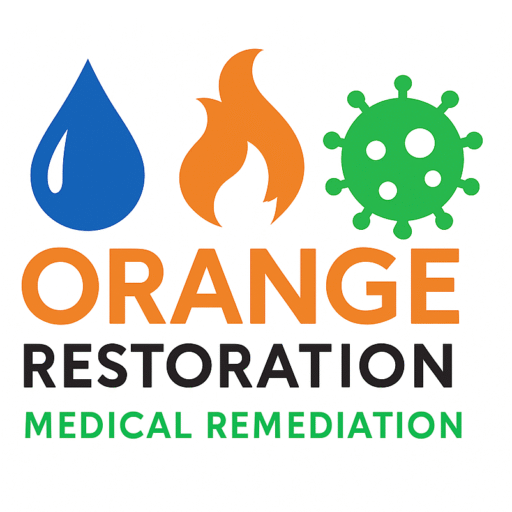As mold killing experts, Orange Restoration has been doing mold remediation for 20 years, so we recently upgraded our skill set to do Medically Sound Mold Remediation, this means we kill 100% of mold for these jobs. Traditional remediation work will only remove living mold cells, and may leave behind broken fragments of mold or dead mold spores.
Mold can be killed by using bleach, alcohol, and hydrogen peroxide. Be sure to dilute the solution of bleach, alcohol or hydrogen peroxide down to meet the needs for the space you are working in, as often you do not need to use too much to get the removal to happen and the mold spores will die also with just a little solution and agitation. It’s important to use of them properly and safely:
- Bleach: A solution of bleach and water (usually one cup of bleach per gallon of water) can effectively kill mold on hard surfaces. It’s important to dilute the bleach properly and to ensure proper ventilation when using it. However, bleach may not be suitable for all surfaces and may cause discoloration.
- Alcohol: Isopropyl alcohol (rubbing alcohol) can also be effective at killing mold on hard surfaces. It’s typically used in concentrations of 70% or higher for maximum effectiveness. Like bleach, alcohol should be used in a well-ventilated area.
- Hydrogen Peroxide: Hydrogen peroxide can be used to kill mold on various surfaces. It’s typically used in concentrations of 3% or higher. It’s less harsh than bleach and may be a better option for porous surfaces.
Regardless of which substance you use, it’s essential to follow safety precautions, including proper dilution, ventilation, and using protective gear such as gloves and a mask. Additionally, it’s essential to address the underlying cause of the mold growth, such as moisture or water intrusion, to prevent future mold problems.
